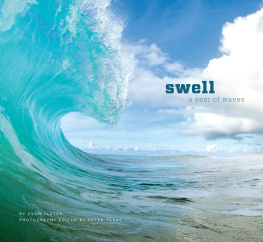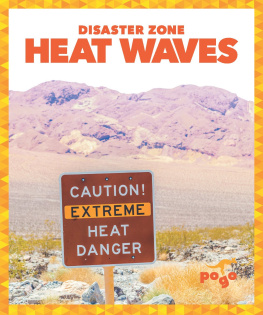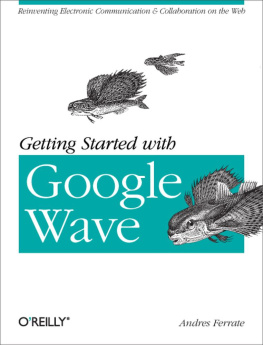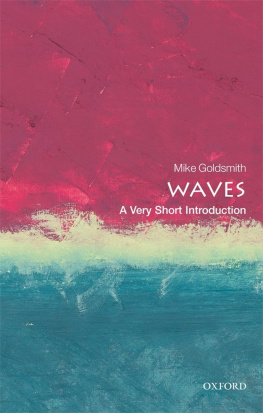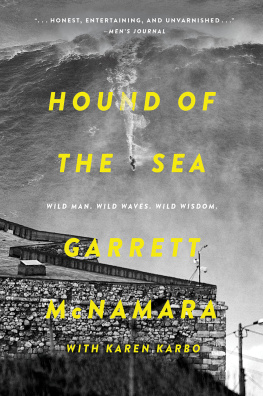
>>> For my father, Evan Slater, whos never turned his back on the ocean.




For a long time, I considered myself an expert on waves. I watched them in wonder at a young age, soon started riding them at my local beach, and gradually set aside other pursuits to explore as many foreign shores as possible. Eventually, I made it my mission to conquer the biggest waves I could find.
That led me to board a boat in January 2001 with the intention of riding a wave a hundred miles off the coast of San Diegoa wave that breaks on a large underwater shoal in the open ocean. Called Cortes Bank, it was at the time surfings Mount Everest. Our crew would be the first to climb it.
Past experience had convinced me that I was prepared for the mission. I had success-fully ridden most of the marquee big-wave spotscountless hours at breaks like Mavericks in Half Moon Bay and Waimea Bay on Oahu. I had been face to face with the ocean at her angriest and come out unscathed and undaunted.
Sure, surfing Cortes Bank was a bit of an Evel Knievel Grand Canyon jump. But a big wave is a big wave, I reasoned. It shouldnt be any different from, say, climbing K2 after summiting Mount McKinley or heli-skiing Valdez after mastering Mount Whistler.
I kept telling myself this as I jumped overboard and started paddling toward the break. One hundred miles out, the ocean did feel different: no land mass as a reference point; surroundedabove and belowby shades of blue; the water as smooth and thick as syrup. And the waves: a herd of raging elephants.
Never had I witnessed swells so fast-moving and haphazard, thundering across the mile-long reef and landing wherever they pleased. A companion and I scrambled helplessly as we dodged and weaved, trying to find some sense of rhythm to the madness. It was almost as if we were in the ocean for our very first time.
About thirty minutes in, Cortes Bank grew tired of our feeble attempts to tame it. After I paddled for a smaller wave and missed it, I turned around to see the biggest, scariest blue wall Id ever faced. My companion was already scratching for the horizon, and even he had no chance. The wave detonated about twenty yards in front of me, and for the first time in my surfing life, I panicked. This forty-five-foot avalanche of whitewater was a force beyond my comprehension, and I was completely at its mercy. Even though no one was around to hear it, I let out a faint, Help! then filled my lungs to their capacity and submerged into the unknown.
The ocean has a habit of sucking people in. As observers, we sit on the beach for hours, lulled into a meditative trance by the waters eternal rhythms. As students, we turn waves into a science, classifying them as orderly events that can be graphed, calculated, and predicted. And as surfers, we try to make waves ours. We catch them. Ride them. Name them. Protect and sometimes fiercely guard them.
But no matter what our relationship with the ocean is, it wont change the simple fact that waves are wild. For every set of clean, orderly swell lines, theres a rogue, freak, or forty-five-foot Cortes Bank cleanup to break the chain and lash out at us. This can be tough on the human psycheespecially for those of us who like to be in controlbut its also what makes waves so captivating. No two waves have ever been exactly the same, and each unique creation of wind and water will find its own way to hit our shore, one every second in time into eternity.
For all their apparent chaos, though, waves do conform to certain behavioral patterns. This book uncovers the nature of wavesa phenomenon Jack London once described as bull-mouthed monsters driven by the hands of Titans. These bull-mouthed monsters actually have parents. The Titans are colliding air masses that create storms and agitate the oceans surface into swell. These storms tend to form in particular regions called storm corridors and tend to be at their most intense during specific times of the year.
They can also be followed.
Its been only twenty-five years since predicting wave events became an inexact but semireliable science. Thanks to years of observation, the strategic use of meteorological tools, and the Internet, we can now forecast swell direction, wave height, and conditions up to two weeks in advance. Swells, as Darwin might have observed, tend to share similar characteristics with other swells from the same region. Indian Ocean waves are generally refined and flawless. North Pacific swells are rough around the edges. In this book, we introduce four distinct swellsPacific Northern Hemisphere, Southern Indian Ocean, Pacific Southern Hemisphere, and Atlantic Hurricaneand observe their defining features, moods and eccentricities. Think of them as character studies of four of the oceans biggest stars.
>>> No two waves have ever been exactly the same, and each unique creation of wind and water will find its own way to hit our shore, one every second in time into eternity.
We also shed light on these swells remarkable reach. Its hard to imagine one pot of stew providing nourishment for two continents and all of the islands in between. But this is exactly what a major storm system does for the shorelines in its target range. And it does so frequently. Take, for example, a 970-mb low-pressure system blowing forty-five- to fifty-knot winds north/northeast south of New Zealand. Before it fizzles out somewhere off South America, this storm and its resulting swell will create everything from twenty-foot daredevil waves in Tahiti to perfectly groomed (but frigid) head-high peelers in Alaska. Total lifespan: twelve days. Total distance traveled: almost seven thousand miles. The images in this book show the kaleidoscope of waves a single storm might produce.
These images155 frozen moments in time featuring every type of wave from open-ocean killers to harmless playthings on the Jersey Shorealso underscore a truth I didnt understand until I faced that forty-five-foot cleanup set one hundred miles off the coast of San Diego. Waves cannot truly be conquered or classified or called our own. The tiny fraction of waves that do touch us in some way can only be considered a gift. The restall 99.99 percent of themwill continue to roam free.

DECEMBER-FEBRUARY
>>> Every group has an aggressor. And among this family of swells, that aggressor is the one blasting out of the Pacifics Northern Hemisphere. Siberian in origin and typically trained for battle in the Bering Sea, North Pacific swells consistently show us the oceans dark side.
Depending on the year, anywhere from ten to twenty significant storms will gain momentum off Japan, charge over the dateline, and send energy toward numerous coastlines. Unlike other storm corridors, where massive low-pressure systems spin in isolation, the North Pacific presents a number of obstacles. On the front lines are the Aleutian Islands and Alaska, which stare these violent storms in the eye and regularly endure massive short-period swells. Take a look at the Dutch Harbor buoy in the Bering Sea during any big winter low-pressure, and youll understand why so many Alaskan king crab fishermen die each year on the job.

